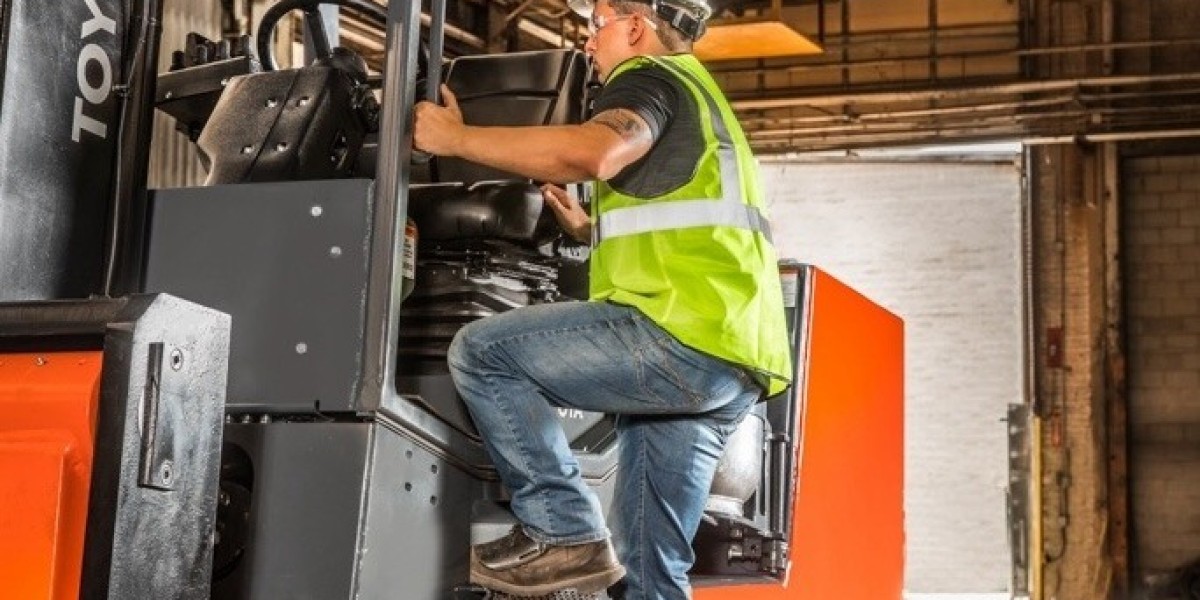You really need to have some solid skills under your belt to work as a forklift driver. This is important. Why? Well, just know that even a minor error can end up injuring both you and your coworkers. Not a desirable thing at all! A good forklift certification course can help you here. It can teach you the essentials of operating a forklift. In this article, we intend to outline the must-dos of operating a forklift and maintaining its safety. Doing these things can help you dodge accidents.
Why Does Forklift Safety Matter?
An OSHA forklift training can bring the following perks:
- Compliance With the Law: OSHA has a rule that says forklift drivers should perform daily checks on their equipment before use. Not following these rules can lead to serious fines and legal issues.
- Avoiding Accidents: Forklift safety inspections are key because they spot and tackle issues before they escalate. This keeps the workplace safe from accidents and injuries.
- Increased Lifespan: Regularly checking your forklift can reveal wear and tear (if any). This lets you get maintenance and repairs done promptly, which can really extend how long your forklift lasts.
- Cutting Costs: The prevention of accidents before their occurrence and ensuring the longer life span of the equipment can result in huge cost savings because of stopping excess downtime, reducing costs associated with repairs, and further minimizing incidences of workers’ compensation claims.
- More Productivity: By following safety rules, you can avoid pricey downtime from accidents and spend less time on repairs and maintenance.
- Increased Confidence Level in Drivers: With proper safety training, drivers become more confident in using forklifts. This is largely because they know their coworkers have also gone through the same detailed training, meaning everyone is well-versed in safety measures. Additionally, companies that provide forklift training show they genuinely care about their staff's safety, which can really boost morale. When employees feel looked after, they often respond by putting in more effort at work.
How to Keep a Forklift Safe?
Think you can drive a forklift without following safety protocols? Think again. This is serious business, and you can't afford to be careless. See this chart published by WarehouseWiz that highlights the percentage of forklift fatalities in various industries in the United States:
The major reasons behind these injuries are:
- Not enough training for operators
- Effects on pedestrians
- Loads that might drop
- Trucks slipping off docks or trailers
- Workers falling from forks
- Obstructed visibility
- Equipment breakdowns
- Emissions causing harm
- Getting crushed by a forklift
An online forklift certification course can teach you things you should do to ensure forklift safety. Here’s a complete checklist for all novice operators:
Visual Checks:
- Make sure to check your tires for the right air pressure, any signs of wear, or any damage
- Look closely at the forks for any signs of cracks, bends, or any other defects
- Check the mast for any signs of wear and damage or the presence of any leaks
- Ensure the overhead guard is not loose and is not damaged in any form
- Check the hydraulic hoses and connections for leaks, cracks, and wear-out
- Inspect every chain and cable for signs of wear/stretch and any form of damage
- For electric forklifts, check the battery for any sign of corrosion, leakages, and connections that are loose
- When using propane forklifts, look for any leaks in the tank and also the proper mounting of the said tank
- And finally, make sure every caution notice and warning decal is in the right place and clear to see
Fluid Level Inspection:
- Check how much oil is in the engine and its condition
- Verify the level of hydraulic fluids and look for any signs of leaks
- Make sure the level of coolant is okay and check for leaks
- Ensure you have enough fuel for the entire shift
Checking Controls and Gauges:
- Take a look at the steering wheel to confirm it’s operating smoothly and is responsive
- Test out the accelerator and brake pedals to ensure they function correctly and feel smooth
- Make sure the parking brake engages properly and keeps the forklift secure
- Check the lift and tilt controls for smooth operation and good responsiveness
- Ensure the horn is working
- Verify that all gauges are functioning well. These include the fuel, temperature, and hour meter
Safety Feature Inspection:
- Make sure the seat belt is in good working order and not worn out
- Give the backup alarm a quick check to see if it’s working
- Check all lights - head, tail, and warning - for proper function and visibility
- Ensure your mirrors are clean, properly adjusted, and undamaged
- Confirm that the fire extinguisher is there, charged, and easy to grab
Operational Checks
- After turning on the power unit of the forklift, pay attention to any weird sounds, rattles, or vibrations encountered
- Operate the lifting mechanism and tilting motions to check if they are in good working order
- Test forward and reverse. Also, observe the functionality of the brakes and the transmission
- Observe the performance of the steering and check that all the controls are working effectively
SOPs for Forklift Safety
A forklift certification training program will also make you aware of the standard operating procedures to be followed by every forklift driver. This is super important for keeping things consistent and following the rules. A solid SOP should clearly lay out how to do the inspections, who’s responsible for what, and what paperwork needs to be filled out. Some key parts of a good forklift safety inspection SOP are:
- Inspections Before Shifts: Before kicking off their shifts, operators have to run safety inspections, note the results, and alert their supervisor if they spot any issues.
- Inspections After Repair: After doing any repairs or maintenance, always check the forklift to ensure it’s safe to use again.
- Routine Care: Regular checkups and upkeep can be beneficial in keeping your forklift in tip-top condition. You should run thorough checkups at least once a year or according to the manufacturer's suggestions.
- Skill Development and Certification: Every person operating a forklift has to complete extensive training on safety inspections and be certified to use the machinery.
- Documentation and Keeping Track of Records: Don’t forget to document and keep inspection results, maintenance records, and training certifications in a way that makes them easy to access and refer back to.
Forklift Certification Course Online Perks
There are multiple benefits of opting for an online forklift training course. Below are some of them:
Convenient Training
You can join online courses from anywhere and at any time that works for you. They’re well-optimized for mobile and tablets. Updating the courses is a breeze as well. Its 100% online and self-paced learning model is less stressful and more convenient for all trainees. Also, you get unlimited test attempts. So, it is a guarantee that you will pass your test. Don’t pass it the first time? No worries! Retake the test as many times as you want until you do. Also, your course will be OSHA, ANSI, CSA-compliant and recognized all over the USA.
Less Costs
Online schools keep their costs down. This lets them offer speedy learning at a much lower price than traditional multi-day, in-person training. If you look up offline certification classes, you'll see just how big the price gap is between forklift certification online and offline options.
Faster Certification
If you go for in-person training, be ready to spend at least one to two days. This is about 8 to 16 hours. For many, that’s paid time. Online training, however, can get you certified in less than 2 hours without sacrificing quality. You can tackle it whenever you want, right from home or your office.
More Fun Training
When you take a forklift driver course online, you get this awesome sense of accomplishment with every part of the course you finish. And the cherry on top? You earn 3 years of certification freedom when you complete it! The main goal of online forklift operator certifications is to really get into the details of how to operate a forklift safely. A little gamification can spice things up, letting operators interact, ask questions, and rack up points for their insights and help.
More Effective Learning
We really need to acknowledge that everyone learns differently—some people are visual, some are auditory, some like reading, and others learn best by doing. Around 65% of learners are visual, so they really benefit from seeing images. Online courses use lots of visuals and clear text to get the point across. On the other hand, offline classes tend to lean towards auditory learners, who are only about 10% of the population. This gap really emphasizes how important online learning can be.
Closing Words
Getting an OSHA forklift certification is super helpful if you're aiming to work as a forklift operator. An online course will teach you everything from safety tips to maintenance to SOPs. Connect with a trusted training provider and get ready to embrace this important role.



